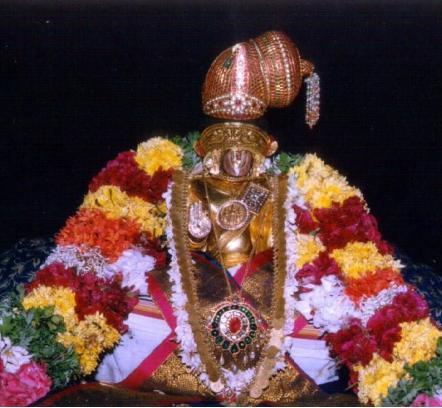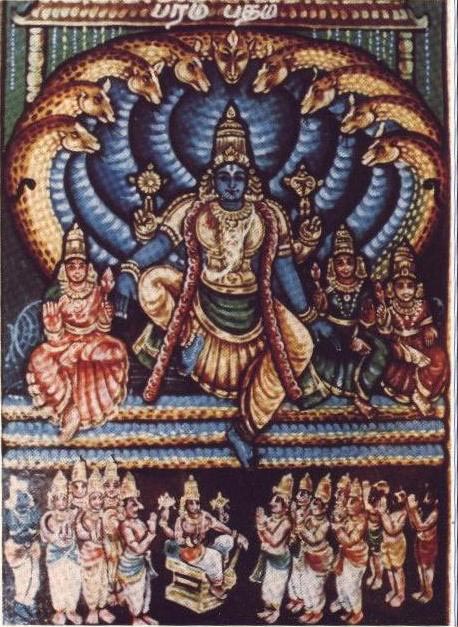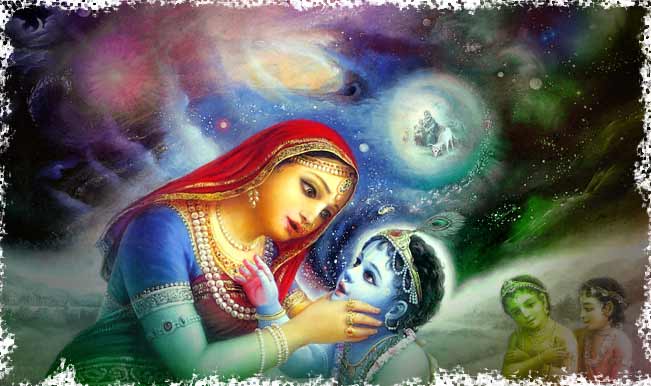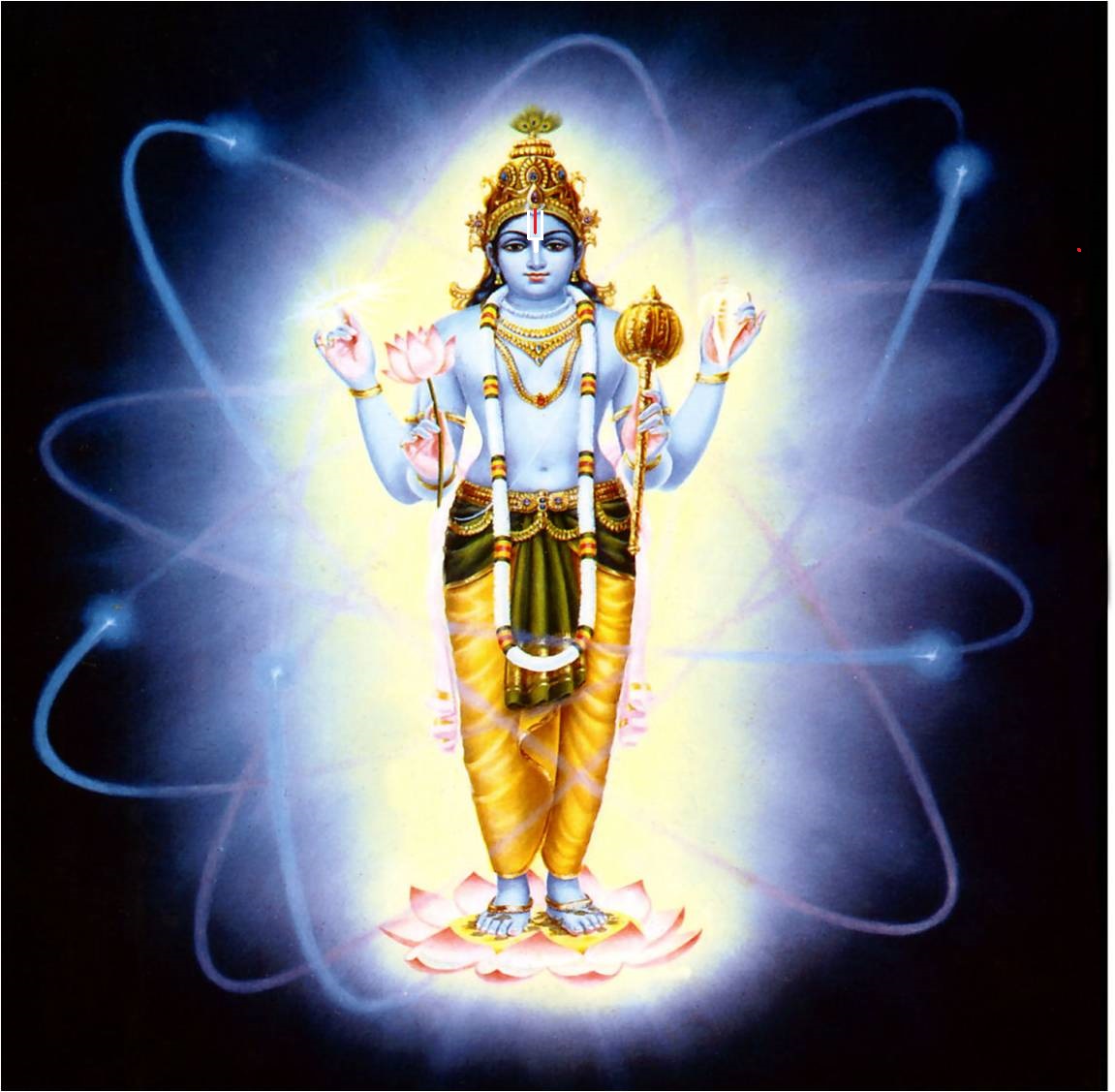srI:
srImathE satakOpAya nama:
srImathE rAmAnujAya nama:
srImath varavaramunayE nama:
Summary of each chapter in second hexade
SlOkam 11
svayAthAthmyam prakruthyAsya thirOdhi: SaraNAgathi: |
bhaktha bhEdha: prabudhdhasya sraishtyam sapthama uchyathE ||
 nammAzhwAr – greatest among gyAnis
nammAzhwAr – greatest among gyAnis
Listen
Word-by-word meaning
sapthamE – in the seventh chapter
svayAthAthmyam – the true nature of paramapurusha i.e., he (bhagavAn) is the object of upAsana (bhakthi)
prakruthyA – with the mUla prakruthi (primordial matter)
asya thirOdhi: – (that knowledge) being concealed (for the jIvAthmA)
SaraNAgathi: – surrender (which will eliminate such concealment)
bhaktha bhEdha: – the (four) types of devotees
prabudhdhasya sraishtyam – the greatness of the gyAni (among those four types of devotees)
uchyathE – are spoken
Simple translation
In the seventh chapter, the true nature of paramapurusha i.e., he (bhagavAn) is the object of upAsana (bhakthi), that (knowledge about bhagavAn) state of being concealed (for the jIvAthmA), surrendering to bhagavAn (which will eliminate such concealment), the four types of devotees and the greatness of the gyAni (among those four types of devotees) are spoken.
SlOkam 12
aiSwaryAksharayAthAthmya bhagavachcharaNArarthinAm |
vEdhyOpAdhEyabhAvAnAm ashtamE bhEdha uchyathE ||
 supreme goal is to serve bhagavAn in paramapadham
supreme goal is to serve bhagavAn in paramapadham
Listen
Word-by-word meaning
aiSwarya akshara yAthAthmya bhagavachcharaNArarthinAm – for the three types of devotees namely aiSwaryArthi who desires for material wealth, kaivalyArthi who desires to enjoy himself after being freed completely from material body, gyAni who desires to attain the lotus feet of bhagavAn
vEdhya upAdhEya bhAvAnAm – those principles which are to be understood and practiced
bhEdham – different types
ashtamE – in the eighth chapter
uchyathE – spoken
Simple translation
In the eighth chapter, the different types of principles which are to be understood and practiced by the three types of devotees namely aiSwaryArthi who desires for material wealth, kaivalyArthi who desires to enjoy himself after being freed completely from material body, and gyAni who desires to attain the lotus feet of bhagavAn are spoken.
SlOkam 13
svamAhAthmyam manushyathvE parathvam cha mahAthmAnAm |
viSEshO navamE yOgO bhakthirUpa: prakIrthitha: ||
 krishNa showing the universe in his mouth to mother yasOdhA
krishNa showing the universe in his mouth to mother yasOdhA
Listen
Word-by-word meaning
svamAhAthmyam – his own greatness
manushyathvE parathvam – being supreme even in human form
mahAthmAnAm viSEsha: – the greatness of those gyAnis who are mahAthmAs (great souls) (along with these)
bhakthirUpa yOga: – and upAsanam which is called as bhakthi yOgam
navamE – in the ninth chapter
prakIrthitha: – well explained
Simple translation
In the ninth chapter, his own greatness, he being supreme even in human form, the greatness of those gyAnis who are mahAthmAs (great souls) (along with these) and upanAsanam which is called as bhakthi yOgam are well explained.
SlOkam 14
svakalyANaguNAnanthyakruthsnasvAdhInathAmathi: |
bhakthyuthpaththivivrudhdhyarththA visthIrNA dhaSamOdhithA ||
Listen
Word-by-word meaning
bhakthi uthpaththi vivrudhdhi arththA – to manifest and nurture sAdhana bhakthi [the process of bhakthi yOga as means to attain bhagavAn]
svakalyANa guNa ananthya kruthsna svAdhInathA mathi – unlimited nature of his auspicious qualities, knowledge about him being the controller of everything
visthIrNA – in detail
dhaSamOdhithA – explained in the tenth chapter
Simple translation
To manifest and nurture sAdhana bhakthi [the process of bhakthi yOga as means to attain bhagavAn], unlimited nature of bhagavAn‘s auspicious qualities, knowledge about him being the controller of everything are explained in detail in the tenth chapter.
SlOkam 15
EkAdhaSE svayAthAthmyasAkshAthkArAvalOkanam |
dhaththamuktham vidhiprApthyOrbhakthyEkOpAyathA thathA ||
Listen
Word-by-word meaning
EkAdhaSE – in the eleventh chapter
sva yAthAthmya sAkshAthkAra avalOkanam – the divine eyes to see him truly
dhaththam uktham – it said that [such eyes] were given (to arjuna by krishNa)
thathA – Similarly
vidhi prApthyO: – knowing (that supreme god), (seeing,) attaining, etc
bhakthi Eka upAyathA – bhakthi is the only means
uktham – is said
Simple translation
In the eleventh chapter, it is said that the divine eyes to see bhagavAn truly were given (to arjuna by krishNa). Similarly, it is also said that bhakthi is the only means for knowing (that supreme god), (seeing,) attaining, etc.
SlOkam 16
bhakthE: sraishtyamupAyOkthiraSakthasyAthmanishtathA |
thathprakArAsthvathiprIthir bhakthE dhvAdhaSa uchyathE ||
 krishNa being affectionate towards vidhura
krishNa being affectionate towards vidhura
Listen
Word-by-word meaning
bhakthE: sraishtyam – greatness of bhakthi yOgam towards bhagavAn in comparison to Athma upAsanam (engaging in pursuing ones own AthmA)
upAya ukthi: – explaining the means to develop such bhakthi
aSakthasya – for one who is not capable of engaging in such bhakthi
Athma nishtathA – engaging in self-realization
thath prakArA: – the types of qualities which are required to engage in karma yOgam, etc
bhakthE athiprIthi: thu – having great affection towards his devotees
dhvAdhaSE – in the twelfth chapter
uchyathE – spoken
Simple translation
In the twelfth chapter, greatness of bhakthi yOgam towards bhagavAn in comparison to Athma upAsanam (engaging in pursuing ones own AthmA), explanation for the means to develop such bhakthi, engaging in self-realization for one who is not capable of engaging in such bhakthi, the types of qualities which are required to engage in karma yOgam, etc., and bhagavAn having great affection towards his devotees are spoken.
adiyen sarathy ramanuja dasan
archived in https://githa.koyil.org
pramEyam (goal) – http://koyil.org
pramANam (scriptures) – http://srivaishnavagranthams.wordpress.com
pramAthA (preceptors) – http://guruparamparai.wordpress.com
srIvaishNava education/kids portal – http://pillai.koyil.org


1 thought on “gIthArtha sangraham – 4”
Comments are closed.